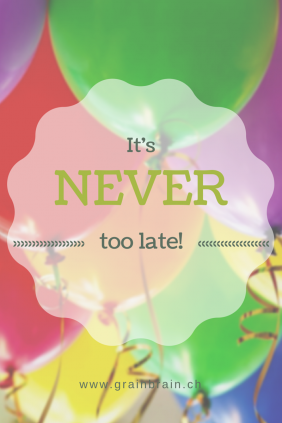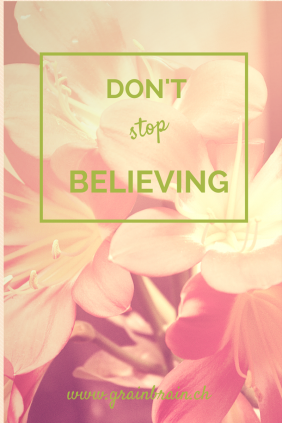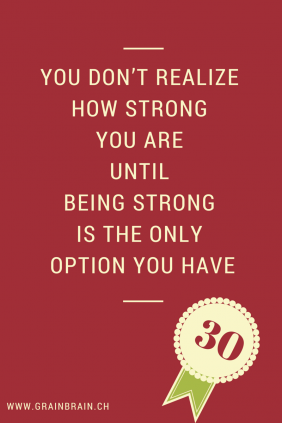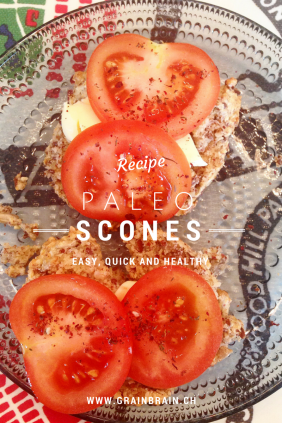Blog
Make A Change – 4 Steps How To
It’s never too late to start a positive change.
“The time for action is now. It’s never too late to do something.” Antoine de Saint-Exupery
It’s easy to think that “you’re too far gone/old/overweight/addicted/stuck” to make a change for yourself and your life.
I know where you’re at right now. I really do.
If you’ve read some of my previous posts, you know how I’ve struggled with making changes in the past…
Having spent a gross majority of my life (26 years), trying to make the right choices for me and my health and having learned lessons from each and every time, whilst not getting anything right.
Seeing different doctors, nutritionists, nurses and experts, even psychologists. And no one could tell me or even give me a clue of what I really needed to do.
I’ve basically ran on wild goose chases in terms of my health my whole life. Different medications, different diets, different motivators and different dream health care teams (of varying success).
This tires a person out, and can even wipe them out completely. What you’re left with is zero motivation, zero patience, zero happiness and 100% wanting to sleep through it all.
At this point I really started feeling like a pre-programmed robot, dreading the future and being sure I wouldn’t see past the age of 30. I was following all of the books, one at a time, and NONE of them made anything better. At all.
It was after that I started studying again, this time to become a nutritionist. And thank the Universe I did.
Somewhere, somehow I found the motivation of giving it (and myself) One. Last. Try. with all the stuff I was learning at school.
And that’s when the proverbial hammer hit the head of the nail – I managed to create something so much more beautiful that I had ever imagined for myself. More health, more freedom, more wealth, more pride, more self-esteem.
This, amongst many others of my stories, taught me a Big Lesson: It’s in the big hurdles that we gain the most insight into ourselves and the most experience in life.
“Nobody can go back and change a beginning. But anyone can start today and make a new ending.” Maria Robinson
Even if you’re 96 years old and realize that, hey, smoking doesn’t serve me like it once used to, it’s better to stop the nasty habit and move on. It doesn’t matter if your last day on earth is tomorrow or in, well, 96 years, there’s always, always, always space to make new positive beginnings.
This is especially true if it comes to improvements in your health and well-being. As we both know, there’s nothing left unless we have this very founding principle in place.
So, what can you do if you realize that there is a change (or even two) you would LOVE to make for yourself?
- Realize that you’re not stuck.
You never were, you never will be. I know it’s not easy to break free from old habits, after all our lizard brains make sure that it’s very comfortable right there. But: getting out of your comfort zone and sniffing a bit of fresh air is essential to making a change. How can you get a breath of fresh air today? How can you move out of that couch potato state of mind? It does take making a plan of action for yourself, and not let said plan be defined by your age or held back by your current situation.
- What are you afraid of?
What’s stopping you from making the ultimate commitment to invest in yourself, your health and your future? Spend some time identifying what might be holding you back. Then find a way to work through them, or get help from a coach or practitioner who knows exactly in what kind of deep ditch you’re currently sitting.
- Find your ultimate motivation.
And make sure this goal is for you and no one else. This is just as true for general goal setting as it is for a lasting life-style change. Why do you want this change? How will you feel once you’re there? What will others think of you?
- What’s the one baby leap you can make today to start it all off?
Take one little step a day, but make sure you take one every day. Help yourself to make an easier transition in the not-too-distant future. It definitely helps to set a deadline for yourself, and work toward that, step by step.
There’s always, always, always something to be grateful for. So why not make one of those things to be grateful for that you made a decision to invest in yourself and your health?
The bottom line is, you don’t need to wait for the “perfect moment” to make things happen. You can decide any time you want to that the time is right for YOU to make a change.
“It’s never too late. Don’t focus on what was taken away. Find something to replace it, and acknowledge the blessing you have.” Drew Barrymore
Diabetes Belief
Don’t stop believin’!
Dealing with any kind of health challenges is, well, challenging to day the least.
And, yes, it’s even more so when you know said challenge (say, diabetes) isn’t going anywhere anytime soon.
This is exactly the point at which it’s so important to keep believing.
I’m definitely not talking about a religious belief here. No Jesus, God, Allah or Buddha right here. I’m talking about a much deeper, more profound belief, the belief in yourself.
Believing that everything is going to be OK. Believing that you will wake up the next morning. Believing that your blood sugar won’t pull a 180 on you while driving. Believing that the hypo treatment will work in time, and that your body can take (yet another) beating in the form of a hyper high blood sugar.
Having said this, you can’t just leave it all up to chance either. Behind that strong belief lays tons of hard work, dedication, resilience and, yes, pain. There are tons of blood sugar checks, basal tests and some near death experiences behind it, too. As well as many crappy doctors appointments and opinions, bad medical team members and just sheer experience.
But having the trust in yourself that you have the knowledge and tools necessary to pull through this situation (too), is truly one of the most valuable things you can have. Believing that you can handle everything that life throws at you, and that you can do so with ease and grace (well, more or less, although we both know there’s nothing easy or graceful with waking up with a 3am low blood sugar…).
Trusting that everything is going to be OK, and that there will be a cure for this someday (even if it might be “5-10 years from now” ;-) ). Believing that there is a purpose to all this madness of poking yourself with various needles and staying off the regular coke, unless it’s a medical emergency. And believing that you won’t find yourself with missing limbs, vision loss and gastroparesis any time in the future.
This kind of belief system is vital for you to keep going, to wake up every morning and feel that you’ve got this. Knowledge and believing you can is truly powerful. Sometimes you have to dare to be wildly optimistic!
Just by showing up every day, you’re already doing an amazing job and have taken one giant leap towards starting to believe in yourself. Remember that there’s never been, and will never be another you, so it’s better to work with what you’ve got.
Being able to believe in yourself and your capabilities has a lot to do with self-love, self-appreciation and self-esteem. Basically you have to know who you are on the deepest of levels in order to know in your core that this is something you can handle.
Also, for me, attitude and being able to believe like this go hand in hand. So it might be that all you have to do is to dig a little deeper in your attitude closet – you’ve got this. I believe in you.
Fat Facts
Food fact: Fat, glorious fat!
Let’s set the record straight here once and for all: not all fats are bad!
Sure, the transfatty crappy vegetable oils (cottonseed, rapeseed and processed sunflower oils for example), margarine, the junk food you get at most fast food restaurants or chips/cakes/cookies/candy aren’t what we’re talking about today. (Which are all pretty sorry excuses for food, really.)
We’re talking about the good, healthy, happy, healing fats, like salmon, coconut, avocado, eggs, olive oil, butter, nuts and seeds, for example.
Eating more fat (and less carbohydrates) has amazing benefits on your health.
When you start adding more fat to your meals, your blood pressure is likely to go back to normal.
Fat also has very minimal, if any at all, effects on blood glucose levels (yay for us diabetics!), meaning less roller coaster and more stroll in the park action.
Chances are also that eating more fat will make you lose weight (I’ll explain this more later in this post).
It also keeps you full and satisfied for longer, meaning that snacking and unnecessary meals are less likely to sneak in to your eating plan.
And, as if that wasn’t enough, here are 7 more reasons you need to give your body fatty acids to work with:
- Fat = energy
Good fat contains more energy than carbs or protein. This is energy (calories) that the body can use and knows how to use, unlike processed carbs, for example.
- Healthy cells need fat
The walls of every cell in your body (the membrane) is made out of fat. If you don’t eat enough fat, you can’t build healthy, properly functioning cells. And that’s putting yourself in a pretty bad place; if you can’t build cells, your body can’t function like it should.
- Think fat!
The cells I just mentioned of course also include your brain cells. But fat is needed for more than that – it’s also needed to build myelin, which is insulation for the nerve endings in the brain and helps carrying messages across.
- Fatty vitamins
The fat soluble vitamins A, D, E and K can’t be absorbed by the intestines without fat, meaning you are depriving your body of these vital vitamins unless you eat enough fat.
- Hormones are made of fat
Your body produces sex hormones with the help of fat, as well as many other hormones and hormone-like substances (like prostaglandins). Your hormones are vital to your body functioning properly, and any irregularity in hormone production can have some unpleasant or even devastating consequences.
- Your skin loves fat!
Your skin is one of the first things to react if you eat too little fat – it gets dry, flaky and feels too tight. The fat we have right underneath our skin also helps to insulate us in colder weathers.
- Fat protects your organs
Just as the whole body is insulated by fat, so are your organs on the inside. Especially the kidneys, heart and intestines rely on fat to keep them from harm and in their correct places (your kidneys can actually start “traveling” in your body if you don’t have enough fat to keep them in place.)
There are two common misunderstandings about fat that I regularly hear:
- “But isn’t eating more fat gonna make you fat?”
Let’s crush this myth once and for all: fat doesn’t make you fat!
Of course you can overeat fat, but it will be difficult as it’s very satiating. Your body has a natural stop that prohibits you from overeating as easily as you can with, for example, carbs.
- “But isn’t fat free of nutrients? How do you get your vitamins?”
The richest sources of vitamins D, E and K2, and choline all come from food sources rich in fat (cod liver oil, red palm oil, grass-fed butter and egg yolks)
Fat also makes vitamins in the other food more available for the body to absorb.
So, where can you add more healthy fats in your day?
Eggs and bacon for breakfast? Avocado and walnuts added to your lunch? Fry the vegetables for dinner in coconut oil? Perhaps you can even have some glorious salmon for dinner?
Fat is healthy and desperately needed by your body, don’t deprive it of this great source of everything.
Lots of lardy love!
Diabetes & The Long Run
When you’re first diagnosed with Diabetes, it’s a major shock to the system.
The questions are endless. What do I eat? What medications do I have to take when? I have to inject myself several times a day?! What the what? I didn’t sign up for this!!
But what happens after living with diabetes for a long time? How does it feel? How does one cope? Why doesn’t one just give up?
Technically, this year marks a series of “jubilees” for me and Diabetes.
It’s been 30 years since my diagnosis this year. 26 of those I spent on a clueless treadmill/roller coaster without a mission and without a cause. The last 4 have been the best ones, so far, starting with me radically changing the way I ate. I’ve spent 28 years with around 10 injections a day, 2 years on the pump. 1 year with my BFF Dexter (my Dexcom CGMS).
Anyway, I want to focus on the first one of these – 30 years with diabetes.
Living with diabetes for 30 years is like living with the most loyal companion (or enemy, depending on the day) you’ve ever encountered. It never leaves your side, and you never get even a second to yourself.
It takes a lot to get used to living with it being a part of you. And, because it’s always evolving, dynamic and on the move, it’s sometimes difficult to keep up with it. Oh, you don’t react well to gluten anymore? Ok, let’s change that. No dairy either? Ok, well, bye bye cheese. Caffeine makes you hyper react? Ok, decaf it is. And that’s just talking about a few food things, completely disregarding certain forms of exercise, timing of medications, or reactions to certain situations.
It’s a silent friend that never talks until it screams. And when it does, it screams loudly. Scary lows, annoying highs, and the possibility of losing a limb or your vision.
The awful feelings and the taste of glucose tablets (or orange juice when your life depends on it, for that matter). Lengthy doctors appointments and the endless needles. Hospitalizations. Advice you should have never followed, other advice you should have followed from day 1. To mention a few.
There are so many things that are so bad with this disease. Horrible, in fact. But there are also things I would have never learned if I hadn’t had this Constant Companion of mine.
It has taught me discipline, timing and humility. It has shown me that life is here to be lived, not to be wasted. Life is fragile, don’t take it for granted. It has taught me about the importance of self-love, no matter what happens. It has helped me see how strong I truly am, “this too shall pass.” I’ve realized that being stubborn isn’t always a bad thing; it can even help you sometimes.
So, what keeps you going throughout the years?
You simply have to. You have no choice but to buckle up and try to enjoy the ride as much as you possibly can. Until that cure comes “in 5 – 10 years”.
Nothing gets better by ignoring diabetes. Trust me, I know.
The mental part of living with diabetes is difficult from time to time. There’s no point trying to sugar coat (ha!) that.
In my teenage years, I didn’t want to have diabetes. I was angry, disappointed at life and everything felt like a huge burden without any light in any tunnel.
Crap endocrinologists, the wrong advice and general teenage turmoil made me ignore diabetes “for a while”.
This “while” made me loose almost everything; my parents, family, friends and myself. And it almost cost me my life.
“Nothing works, why bother?”, I remember thinking. But it didn’t make diabetes go away. Rather the opposite.
Time and again diabetes would show up, scream loudly at me for ignoring it and smack me straight in the face. I was in the hospital from passing out on the street, and other times because I was in a diabetic ketoacidosis (DKA), close to death. And everything in between.
Once I got my proverbial shit together, it still took me years to get back to the excellent care my parents had once given me. Many, many trials and errors, wrong paths and terrible turns followed. As soon as I finally thought I had a foot firmly on the ground, the carpet was pulled out under me once again.
Luckily, I managed to find a road leading towards my path.
Diabetes IS a part of you, whether you want it to be or not. And it’s up to you to find a way to work with it in a way that works for YOU. It has to become second nature to you to check blood sugars, (gu)es(s)timate carbohydrates in a meal, take your medications and to accept your (new) reality. Not to mention finding the small things that make you feel better.
For me it was a long-winded road, the batter part of 26 years, to get to the point where I am today. And I still regularly find out new things about my life with diabetes. It’s a disease that keeps you on your toes, that’s for sure.
You cope because you have to. You don’t give up because it’s not an option. And just for being in this position, you deserve a huge medal! But along the way, you may just find a wonderful path through it all that is made just for you.
What are your biggest struggles and questions when it comes to diabetes? Let’s discuss in the comments below.
Paleo Scones
Going grain free = going bread free.
In the very most cases, at least. The “bread” you do eat won’t be the factory produced, refined stuff you find at the super market.
Bread is usually one of the things I hear most often from my clients that they miss when they are getting healthier. Which nowadays really surprises me, actually, although it didn’t use to… I was just as much of a bread addict as I’m sure you are, or have been, too.
But I’m very proud of you that you’re willing to make this change for yourself; to go at least gluten-, if not grain free!
So, you know those mornings (or lunches, or evenings), where you just wish there was a simple, yet healthy, thing you could throw together and have fresh out of the oven?
These wonderfully nutritious and yummy paleo scones you can whip together in under 5 minutes. And they’re done in 10 in the oven.
Paleo Scones
You’ll need:
3 dl almond flour
0,5 dl chia seeds (can also be changed to sunflower seeds or linseeds, depending on your taste and preference)
2 eggs
1 tsp baking powder
1 tsp psyllium seed husk
A pinch of salt
You can also put some seeds on top of the scones, making it more into a type of bun than scones. Variations are endless!
Do this:
- Put the oven on 180 degrees Celsius
- Mix all ingredients
- On an baking sheet covered with parchment paper, make 6 socnes/buns with a spoon
- Put in the oven for about 10 minutes
- Enjoy with butter, cheese (if you can handle it), vegetables, ham, or unsweetened jam, or almond butter.
Nutritional info (per scone):
Carbs 5g, 3g fibers
Calories (kcal): 198
Fat: 16g
Protein: 7.5g
I’ve based this recipe on the fantastic Annika Sjöö’s original recipe. She’s a truly inspiring swede who is fully into eating Paleo and training CrossFit, and won Swedish “Let’s Dance” (“Dancing with the Stars”) a couple of years ago. If your Swedish is any good, check out her inspirational blog here!
Let me know what you think of this recipe! Do you have another favorite (grain-free) bread recipe to share with me? Post it in the comments!





